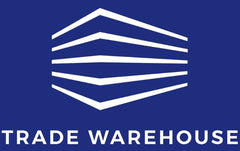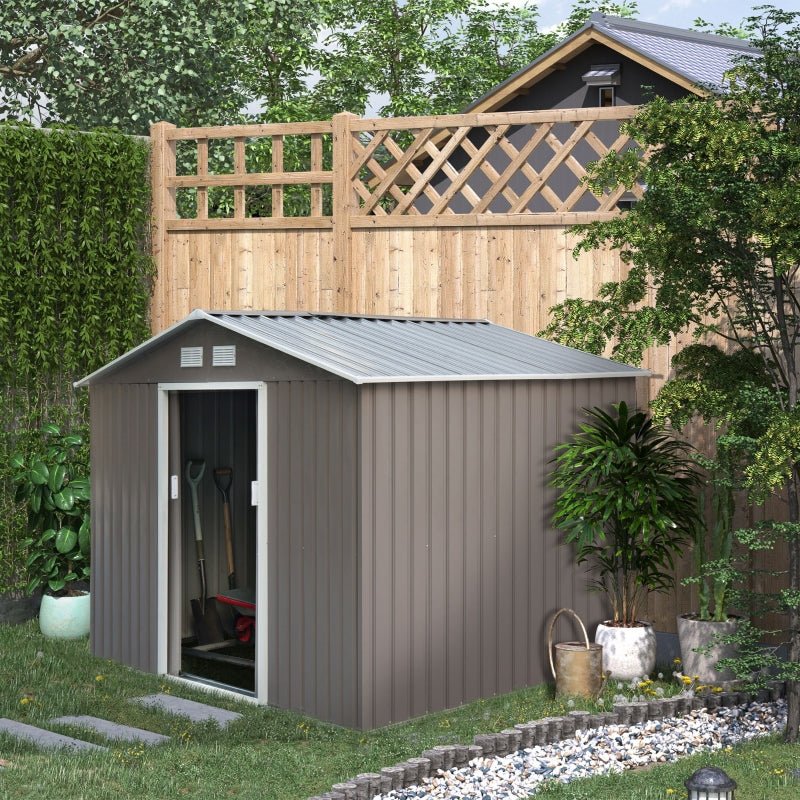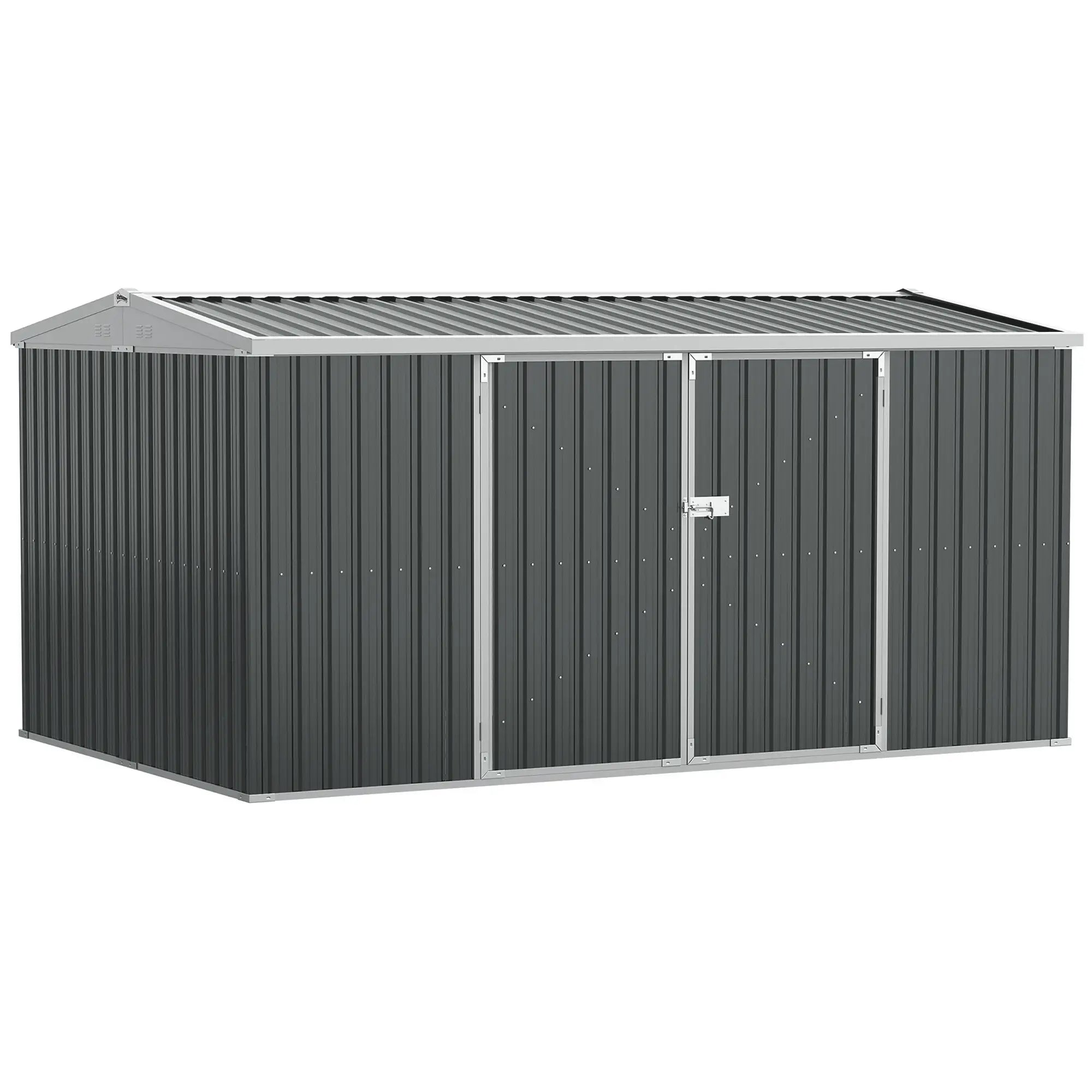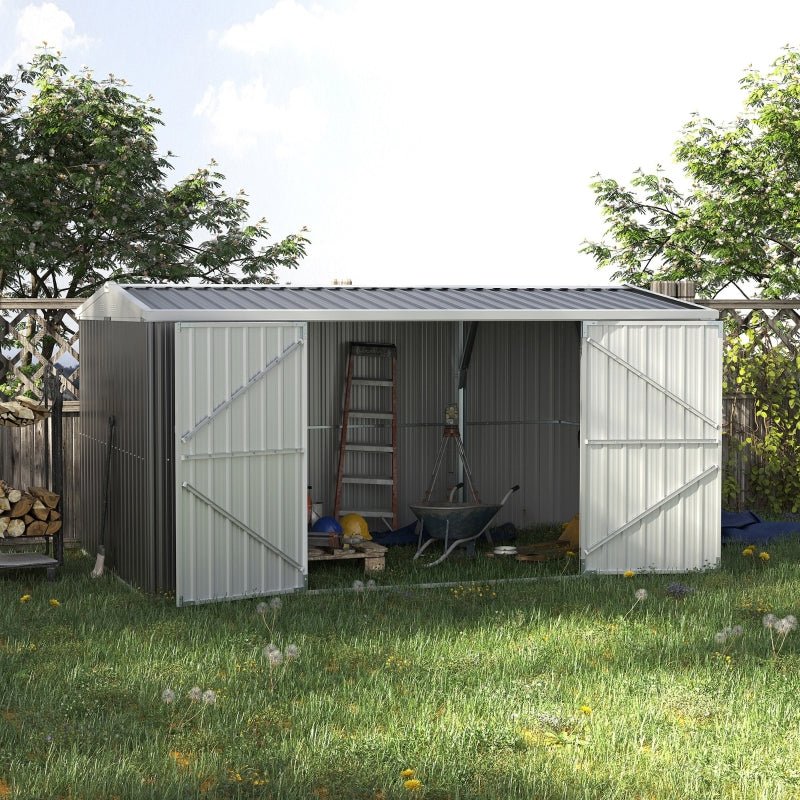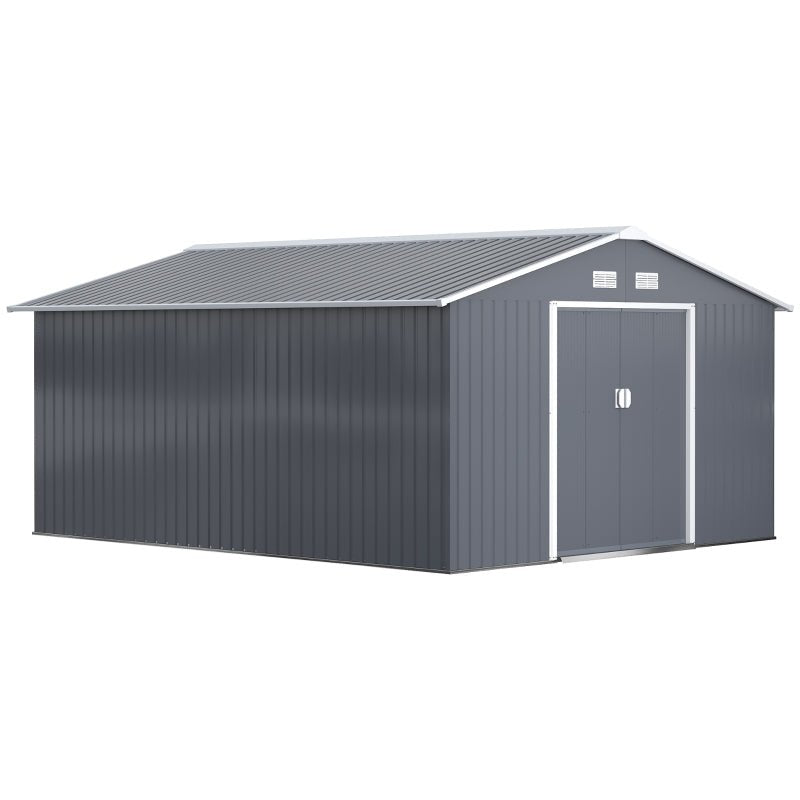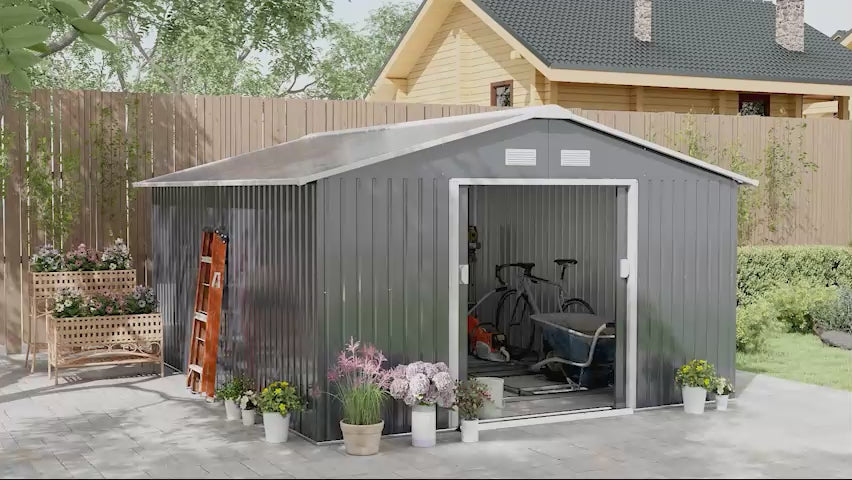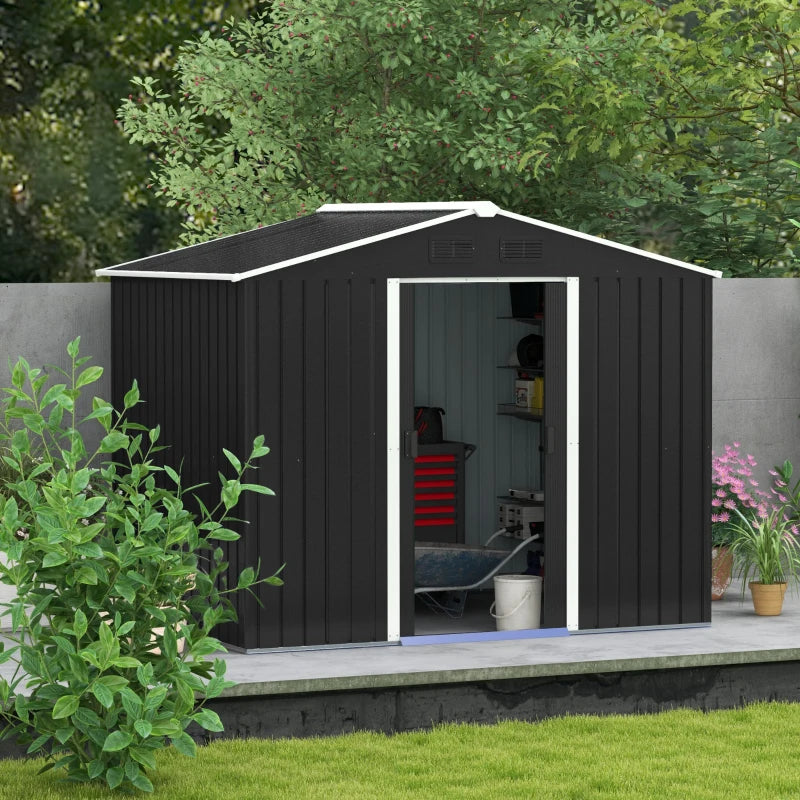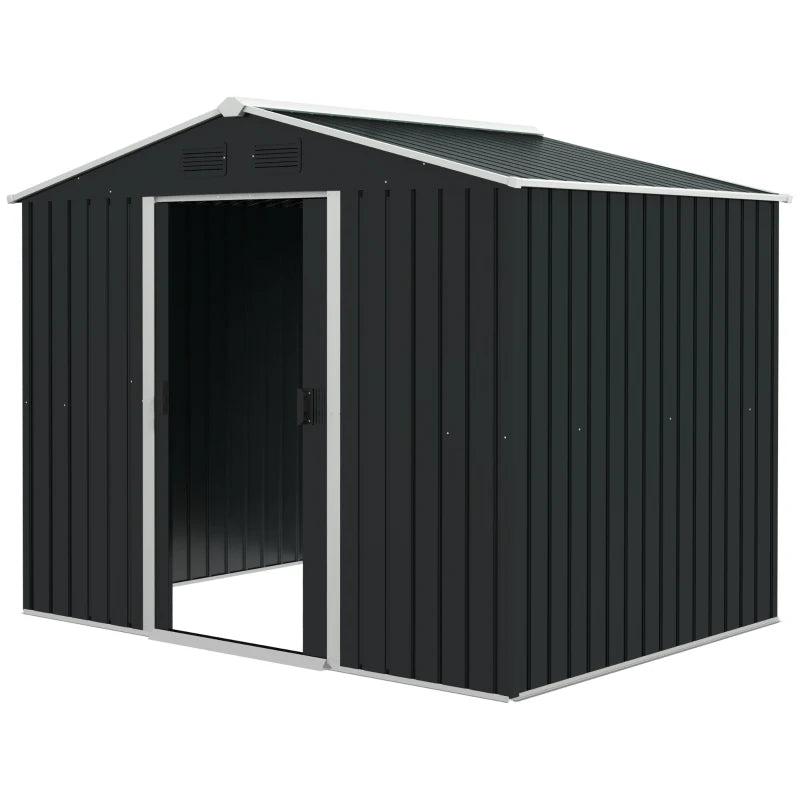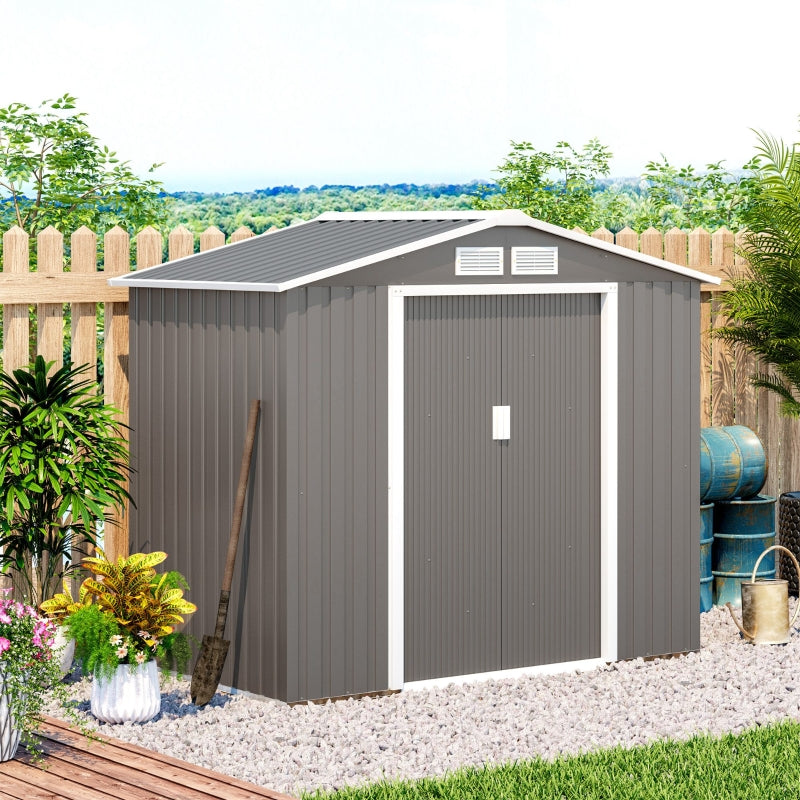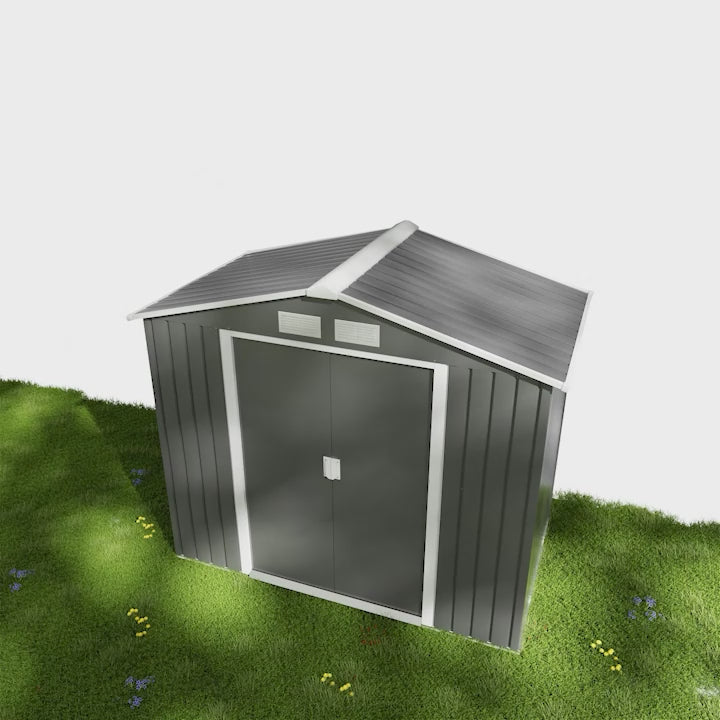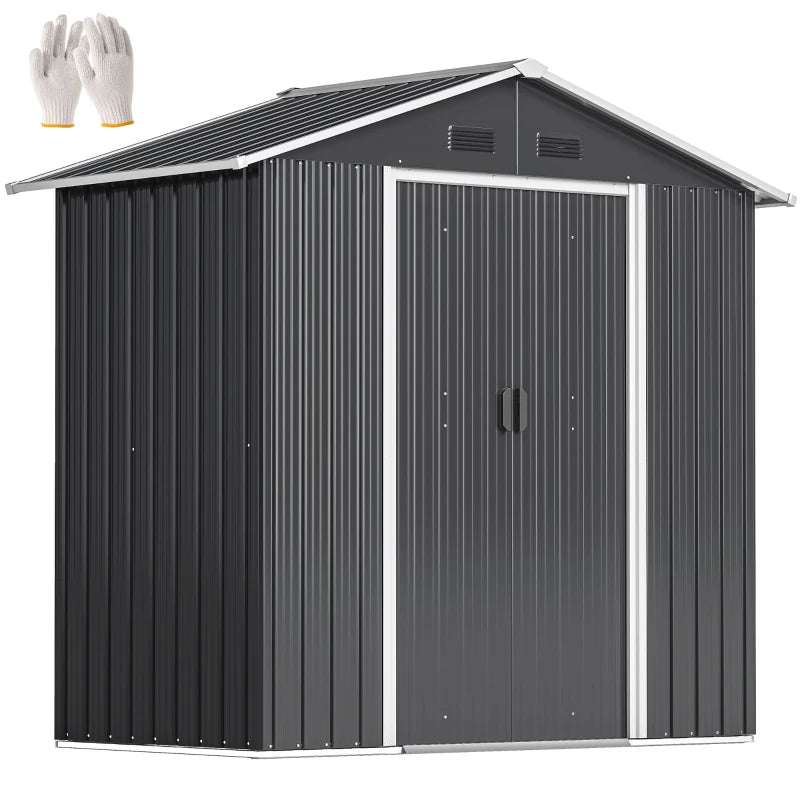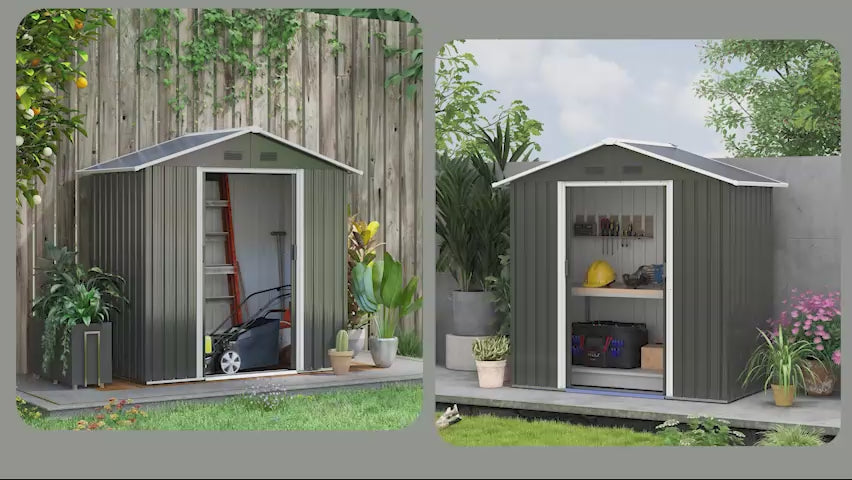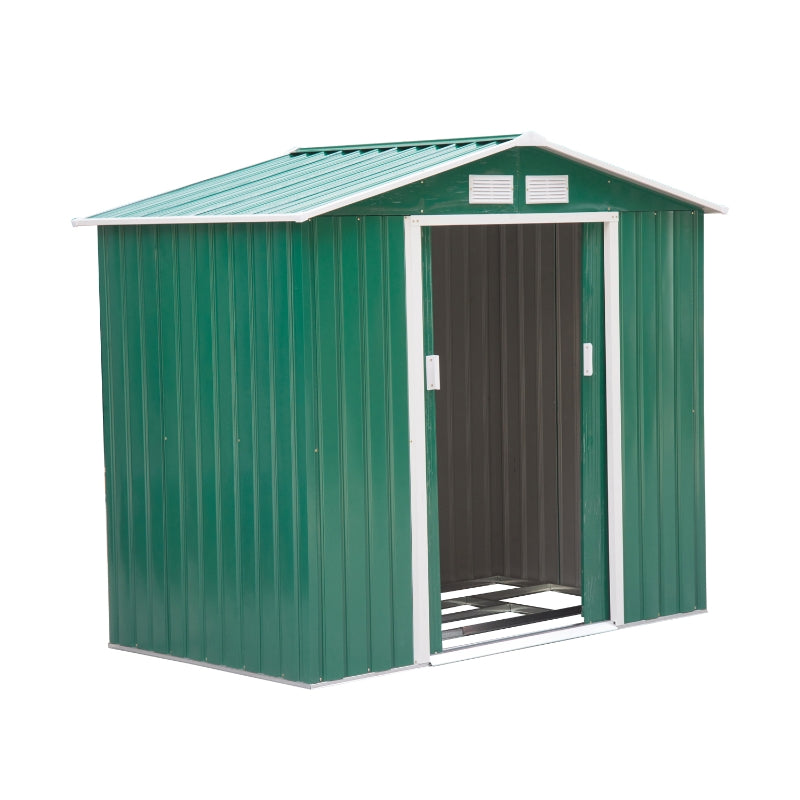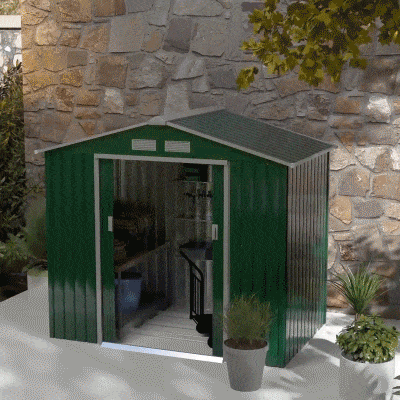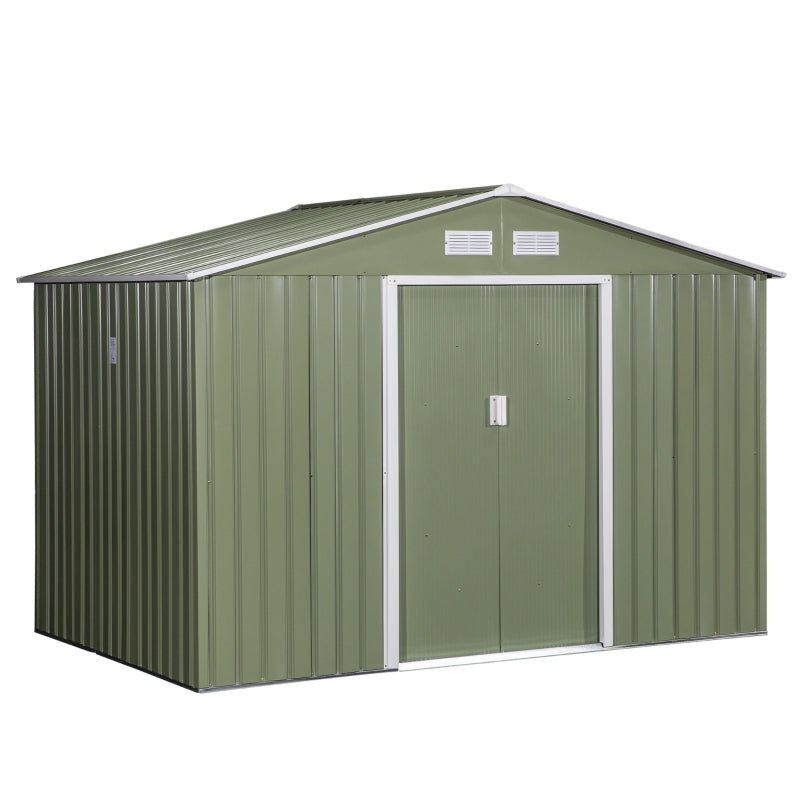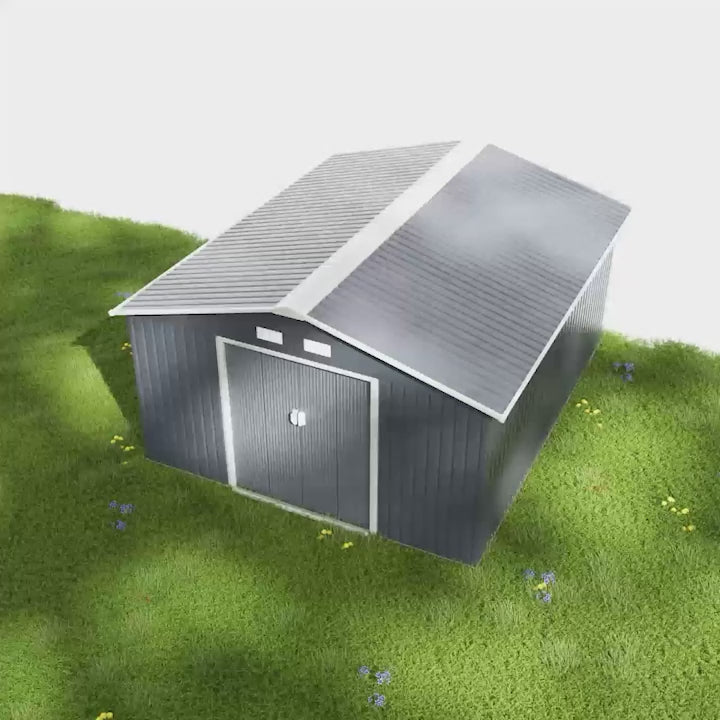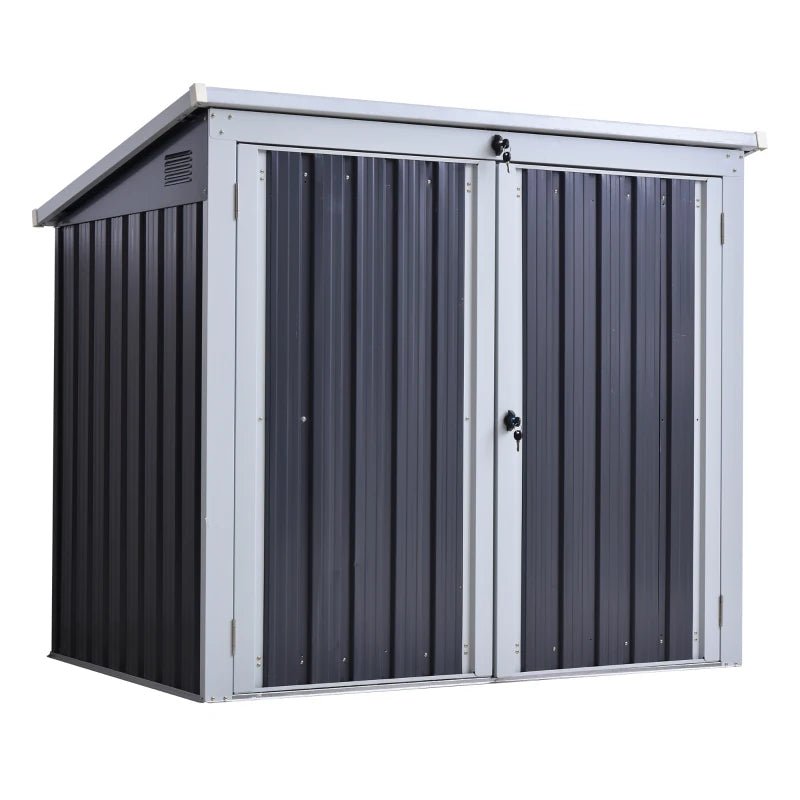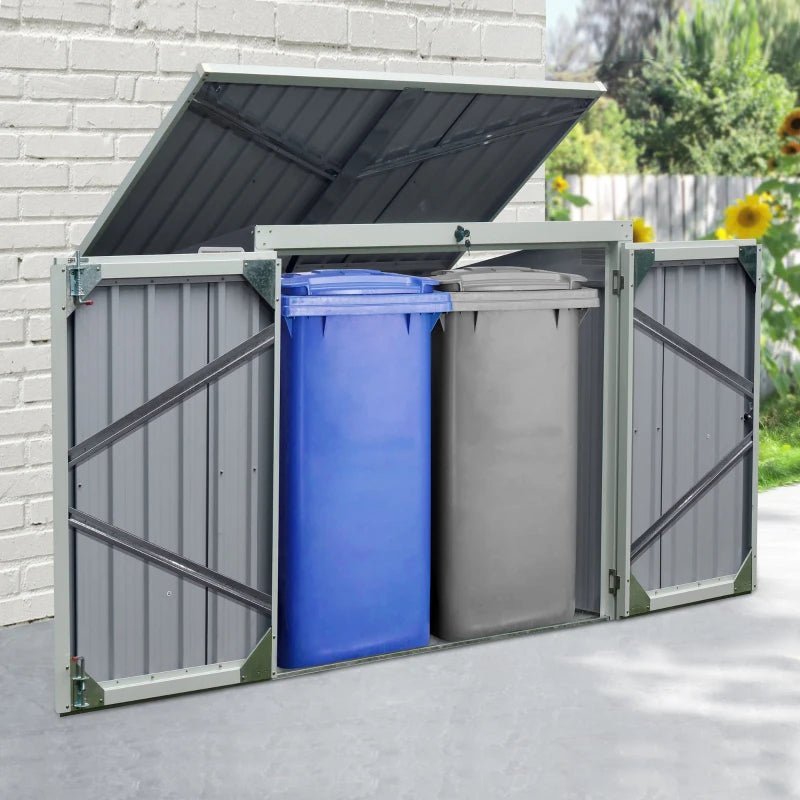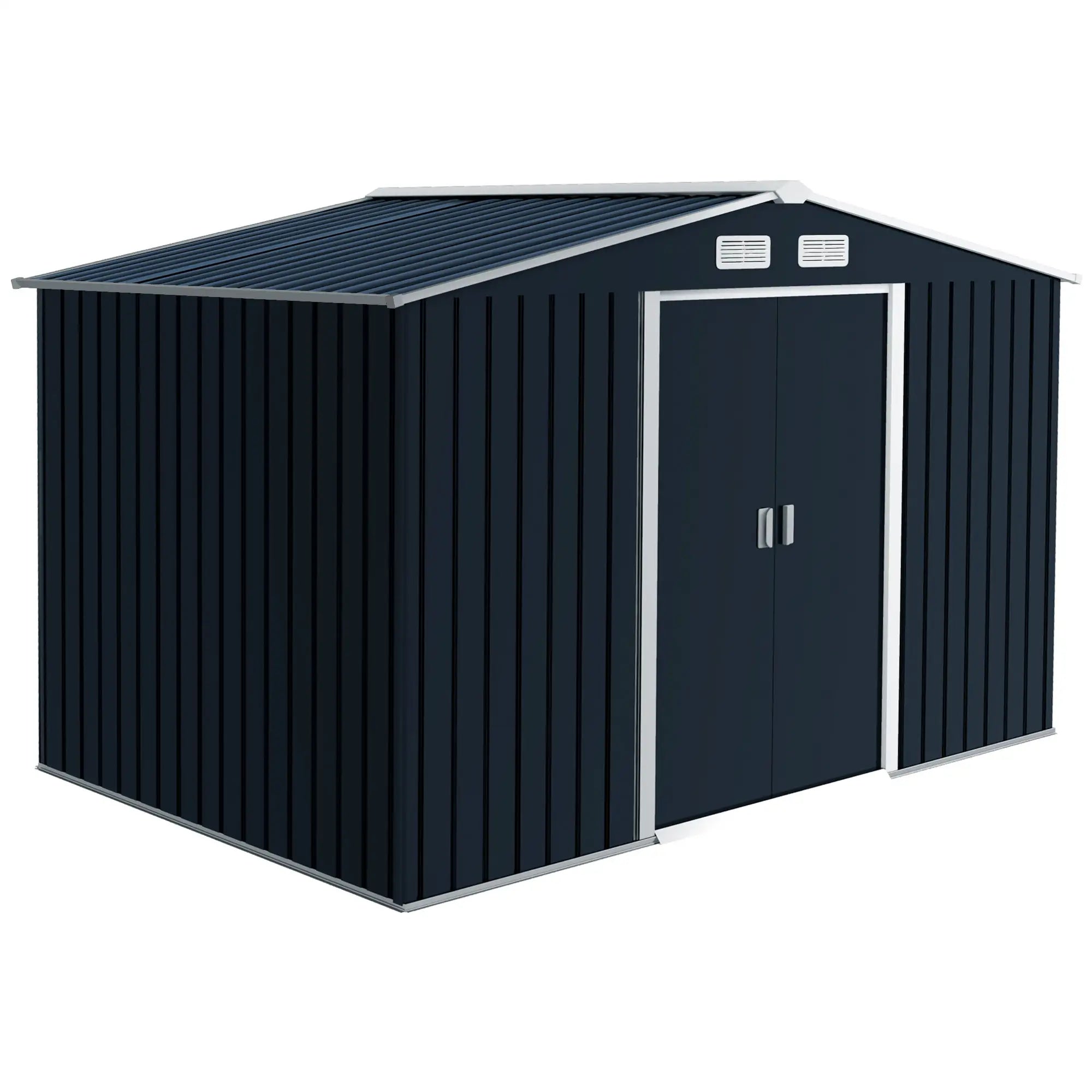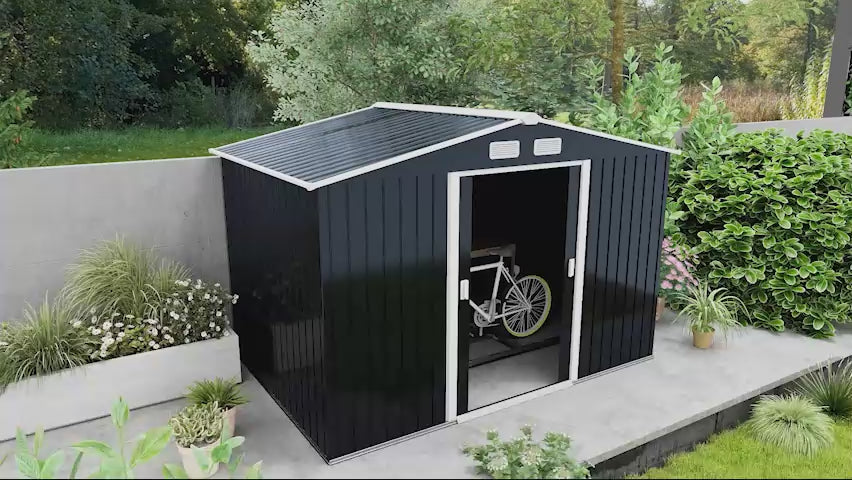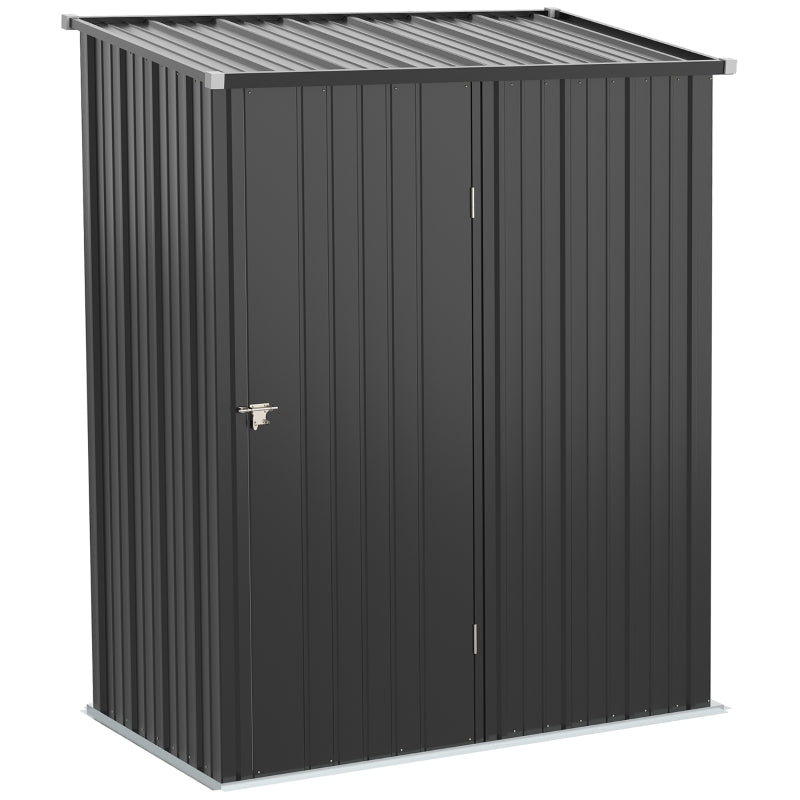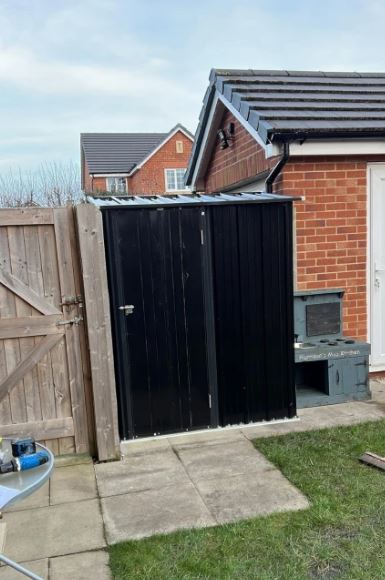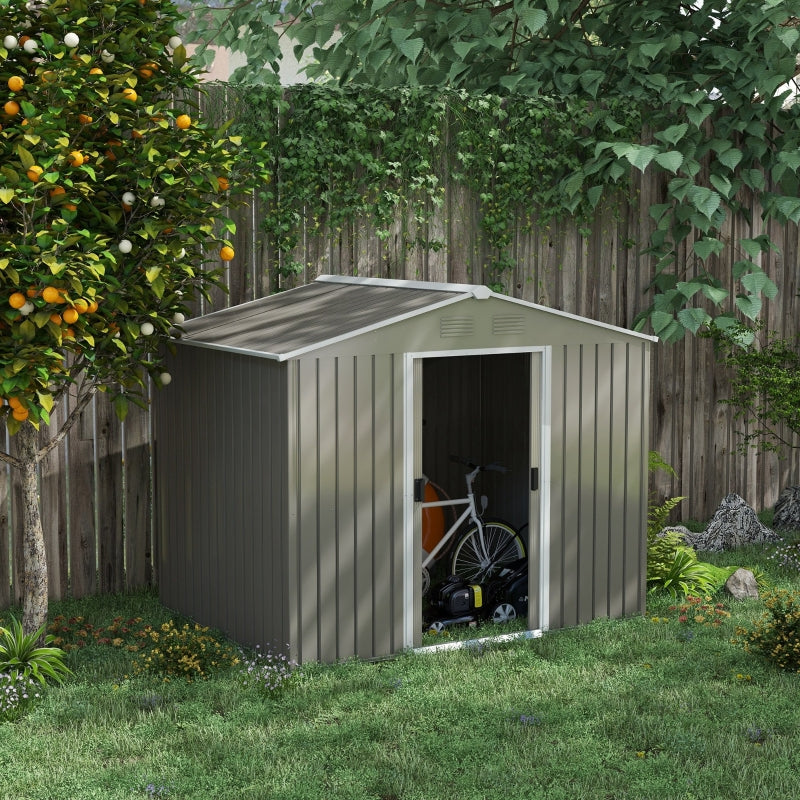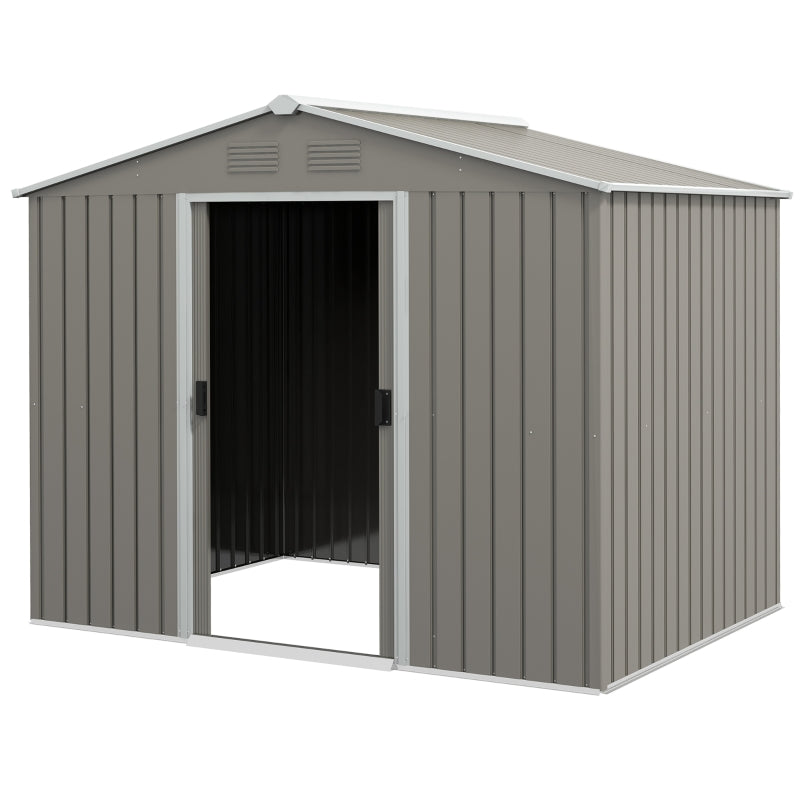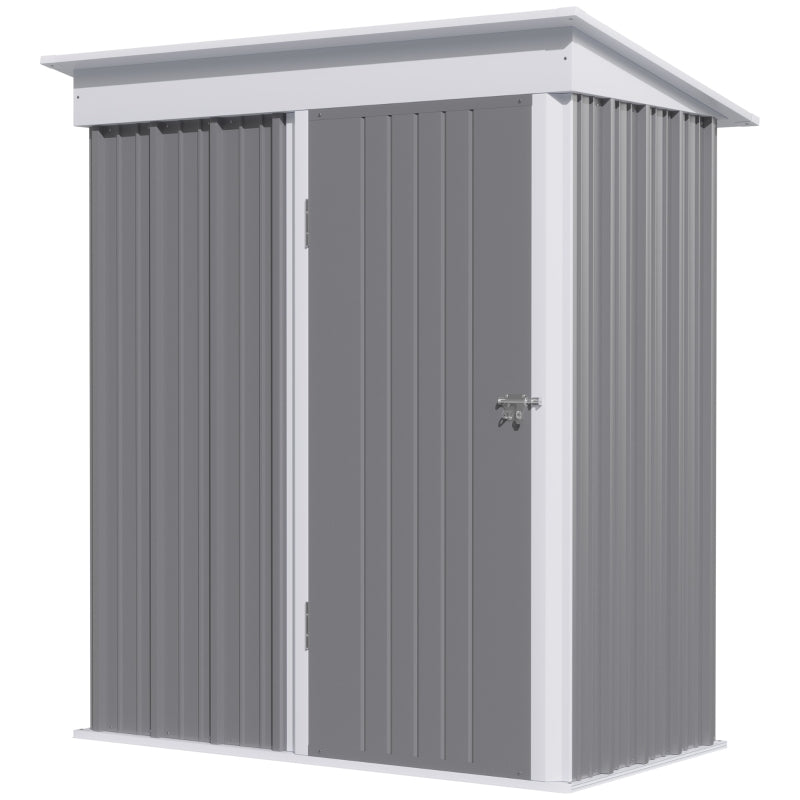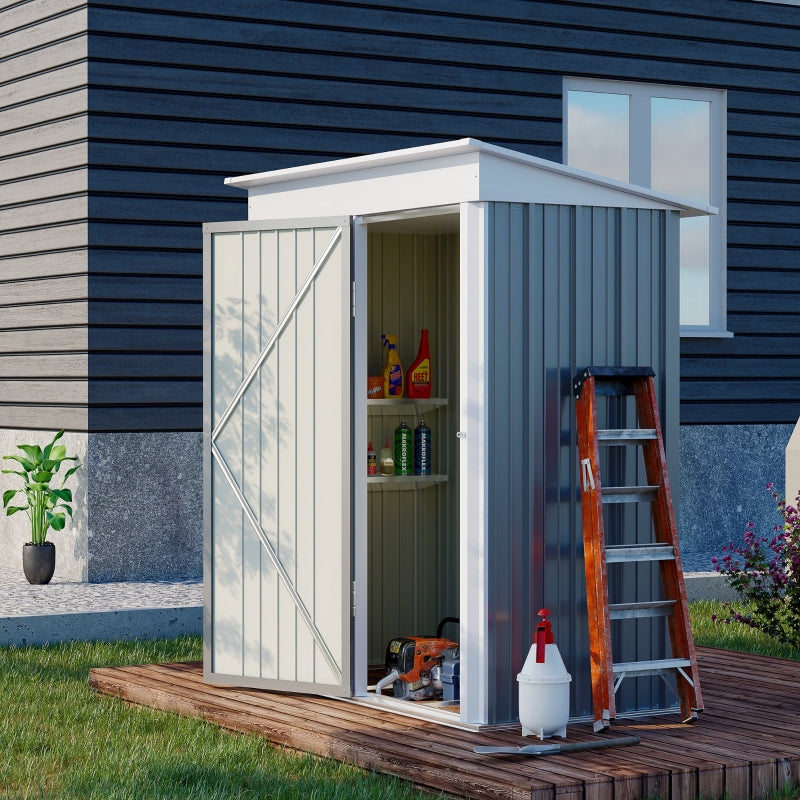When it comes to garden storage solutions, metal sheds have a reputation for being strong, secure, and low maintenance. But one of the most common questions buyers ask is: how long does a metal shed actually last?
The answer isn’t as simple as a single number. As a leading UK supplier of garden sheds, the lifespan of a metal shed depends on multiple factors, including the type of metal used, environmental conditions, installation quality, and ongoing maintenance.
A high-quality galvanised steel shed can last 20 to 30 years or more, while cheaper models may struggle to reach 10-15 years if neglected.
In this expert guide, we’ll explore:
✔ The average lifespan of metal sheds and how they compare to other materials like plastic sheds.
✔ The key factors that determine longevity.
✔ Practical maintenance tips to maximise lifespan.
✔ When and why you might need to replace your shed.
What’s the Average Lifespan of a Metal Shed?
On average, a well-maintained metal shed lasts between 20 and 30 years. However, the actual longevity can vary based on:
- The quality of materials (galvanised steel vs. aluminium vs. untreated metal).
- Weather conditions (rain, humidity, snow, and extreme temperatures).
- How well the shed is installed (a poor foundation leads to faster wear and tear).
- Preventative maintenance (rust prevention, repainting, and structural checks).
✔ Budget metal sheds (typically made from thin, untreated metal) may only last 10-15 years if exposed to harsh conditions without protection. Areas like Aberdeen and Huddersfield may suffer from high rainfall, especially in winter months.
✔ High-quality galvanised steel sheds, like those in our metal garden sheds collection, can exceed 30 years when well cared for and installed correctly.
Unlike wooden garden sheds, which can be more prone to rot, insect damage, and warping, metal sheds require significantly less maintenance and offer superior longevity.

⬆️ A large metal shed sold by Trade Warehouse. We offer nationwide free delivery on all metal sheds.
Factors That Affect the Longevity of a Metal Shed
1. Material Quality: The Type of Metal Matters
Not all metal sheds are created equal! The material used plays a huge role in how long your shed will actually last.
- Galvanised Steel – The best option for long-term durability. Steel coated in zinc resists rust and corrosion, making it ideal for all-weather conditions.
- Aluminium – Naturally rust-resistant and lightweight, but can be less sturdy than steel.
- Untreated Metal – Prone to rust and corrosion, leading to a shorter lifespan unless regularly maintained.
For the longest-lasting option, we recommend galvanised steel sheds, such as the 13 x 11ft corrugated metal storage shed, which offers good rust resistance and structural integrity.

Above is the 13x11ft best selling metal shed that we offer. It's also available in teak and green colour. Contact us for more info.
2. Proper Installation & Base Preparation: The Key to a Long-Lasting Shed
Interestingly, one of the most overlooked but crucial factors in determining the lifespan of a metal shed is how well it’s installed and what kind of base it sits on.
Even the highest-quality galvanised steel sheds won’t last if they are sitting on an unstable, damp, or poorly prepared foundation.
A solid base ensures:
✔ Better structural stability – Prevents the shed from warping, shifting, or sinking over time.
✔ Improved moisture control – Stops water from pooling underneath, reducing the risk of rust and corrosion.
✔ Enhanced security – A stable foundation makes the shed harder to tip, move, or break into.
But what’s the best base for a metal shed?
Here’s how different foundations compare:
Comparing Shed Base Options: Pros & Cons
| Base Type | Pros | Cons | Best for… |
|---|---|---|---|
| Concrete Slab | Strong, durable, long-lasting, keeps shed level | Requires professional installation, expensive | Permanent sheds, long-term investment |
| Gravel Base | Drains moisture well, prevents rust, DIY-friendly | Needs a frame to hold gravel in place | Moderate-sized sheds, cost-effective options |
| Paving Slabs | Easy to install, provides solid footing | Can shift over time if not set properly | Small to medium sheds, flexible placement |
| Wooden Platform | Raises shed off the ground, prevents moisture | Requires maintenance, can rot over time | Coastal areas, wet climates, raised storage needs |
| Directly on Soil/Grass | No cost, quick setup | Encourages rust, uneven support, poor drainage | NOT RECOMMENDED |
Why You Should Never Place a Metal Shed on Bare Soil or Grass
Leaving your shed on soil might seem like the easy, no-cost option, but it’s a recipe for disaster.
Soil absorbs and retains moisture, meaning the bottom of your shed will be constantly exposed to dampness.
This can lead to:
❌ Rapid rusting and corrosion of the base panels.
❌ Sinking and structural shifting over time, causing instability.
❌ Weakened anchoring, making the shed more vulnerable to wind damage.
To avoid these issues, always choose a stable, well-drained base.
If you’re unsure how to set one up, check out our step-by-step guide on whether metal sheds need a base.
By choosing the right shed foundation and installing your shed properly, you can significantly extend its lifespan, keeping your storage secure and weatherproof for decades to come. 🚀
3. Rust Prevention & Maintenance: Keep Your Shed Corrosion-Free
Rust is the biggest threat to metal sheds, but with proper care, you can prevent it and extend your shed’s lifespan.
✔ Use Rust-Proof Coatings – Powder-coated or galvanised steel sheds resist corrosion far better than untreated metal.
✔ Control Condensation – Poor ventilation traps moisture, accelerating rust. Add air vents or breathable insulation to reduce humidity.
✔ Inspect & Repair Damage Quickly – Even small scratches can expose metal to rust. Repaint or apply rust-proof spray to prevent spread.
For a detailed rust prevention guide, check out How to prevent a metal shed from rusting.
How Metal Sheds Compare to Other Shed Materials
| Shed Type | Average Lifespan | Pros | Cons |
|---|---|---|---|
| Metal Sheds | 20-30+ years | Rust-resistant, fireproof, pest-proof, low maintenance | Can rust without treatment, gets hot in direct sun |
| Wooden Sheds | 15-25 years | Natural look, good insulation | Requires frequent maintenance, vulnerable to rot & pests |
| Plastic Sheds | 10-20 years | Rot-proof, lightweight, no rust issues | Weaker structure, can fade & crack over time |
While wood offers a classic aesthetic, metal provides the best durability with minimal upkeep. If you’re considering alternatives, explore our wooden garden sheds for comparison.
When Should You Replace a Metal Shed?
Even the best sheds don’t last forever. Here are signs it might be time for a replacement:
✔ Extensive rust or corrosion compromising the structure.
✔ Warped or damaged panels leading to leaks and reduced security.
✔ Doors no longer close properly, leaving the shed vulnerable to weather or theft.
✔ Foundation issues causing an uneven or unstable structure.
If security is a concern, read our shed security tips to keep your storage safe.
Conclusion: Is a Metal Shed a Long-Term Investment?
A high-quality metal shed is one of the best long-term outdoor storage solutions available.
Unlike wooden sheds, which require frequent treatment to prevent rot, or plastic sheds, which can become brittle over time, metal sheds offer superior durability, weather resistance, and low maintenance.
With proper installation, rust prevention, and regular care, a well-built metal shed can last 20 to 30+ years, making it a smart investment for homeowners and businesses alike. Whether you need a secure garden storage unit, a workshop, or a bike shed, choosing a galvanised steel or powder-coated metal shed will ensure long-lasting protection for your belongings.
If you're ready to invest in a durable, weatherproof storage solution, perhaps start by exploring our apex metal sheds collection for high-quality, long-lasting models designed for strength and longevity.
Quick Summary: How to Make Your Metal Shed Last 30+ Years
✔ Choose Quality Materials – Opt for galvanised steel or powder-coated metal for maximum rust resistance.
✔ Install a Solid Base – A concrete, gravel, or raised wooden platform prevents moisture buildup and structural damage.
✔ Prevent Rust & Corrosion – Apply rust-proof coatings, ensure proper ventilation, and check for condensation.
✔ Regular Maintenance – Inspect for scratches, leaks, and structural issues, and repair damage immediately.
✔ Protect from Harsh Weather – Position your shed strategically and consider awnings or metal pergolas for added protection.
By following these steps, you can ensure that your metal shed remains functional, secure, and rust-free for decades to come.

Lots of the metal garden sheds that we supply come with supporting galvanised frames. Shop the full range on our website.
